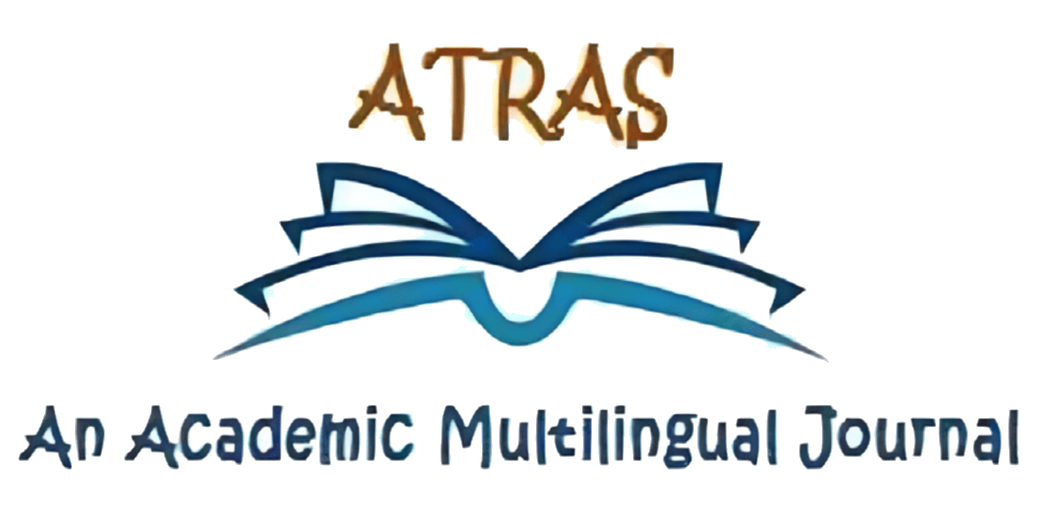First Year EFL Students’ Perceptions Toward the Use of Artificial Intelligence to Enhance Oral Communication Skills:
The Case of ENS Constantine
Sarra BOUMAZA
Ecole Normale Supérieur Assia Dejebar Constantine, Algeria
boumaza.sarra@ensc.dz
https://orcid.org/0009-0000-0753-5938
Abstract
There was a tremendous widespread of the English language in different domains that underline its considerable importance as an international language. EFL teachers integrate artificial intelligence in language classrooms to enable them to practice the language in a relaxed learning environment considering the significance of oral communication skills to English learners. This paper aims to determine the impact of artificial intelligence-powered tools in enhancing oral communication skills. The study investigates English students’ perceptions and opinions about the significance of artificial intelligence’s integration to improve their oral communication skills. The research chooses the population randomly from first-year English students at the Ecole Normal Superieur ‘Assia Djebar’, Constantine, Algeria, for the academic year 2023_2024. A semi-structured questionnaire is administered to forty students to give their opinions about the role of artificial intelligence in improving oral communication skills. Results of the research have concluded that artificial intelligence is significant in enhancing learners’ oral communication skills and overcoming the possible challenges they face.
Keywords: Artificial intelligence, English language, first year EFL students’ perceptions, oral communication skills, powered tools, technology
DOI:
https://doi.org/10.70091/atras/AI.21
How to Cite this Paper :
Boumaza, S. (2024). First Year EFL Students’ Perceptions Toward the Use of Artificial Intelligence to Enhance Oral Communication Skills: The Case of ENS Constantine. Atras Journal, 5 (Special Issue), 337-353.
References:
Baker, C., & Burri, M. (2018). Adaptive learning technology in ESL/EFL education: A systematic review. Applied Linguistics Review, 29(1), 113-129. https://doi.org/10.1515/applirev-20170112+
Boumaraf, A. (2024). Exploring Students’ Attitudes Regarding the Use of AI-Assisted English
Language Learning. Lougha – Kalaam, 10(1), 776-787.
Bueno, A., Madrid, D., & McLaren, N. (eds.). (2006). TEFL in Secondary Education. Granada: Editorial Universidad de Granada
Cango Patiño, A. E. et al. (2024). The improvement of oral communicative competence in english through the artificial intelligence: Desarrollo de la competencia comunicativa oral en inglés mediada por la inteligencia artificial. LATAM Revista Latinoamericana De Ciencias Sociales Y Humanidades, 5(1), 3449 – 3456. https://doi.org/10.56712/latam.v5i1.1850
Chang, W., Yuan, Y., & Lee, C. Y. (2021). Natural Language Processing in AI: Rethinking its role in language learning. AI & Society, 36(3), 709-721. https://doi.org/10.1007/s00146-020-01058-z
Chappell, P., & Jennings, S. (2018). The role of artificial intelligence in education: An exploration of current practice and future possibilities. Educational Review, 70(3), 370-384.
Celce-Murcia, M. (2001). Language Teaching Approaches: an Overview. In M. CelceMurcia (Ed.), Teaching English as a Second or Foreign Language (3rd Ed., pp. 1-11). Boston: Heinle & Heinle.
Clifford, R. T. (1987). Language Teaching In The Federal Government: A Personal Perspective. The Annals of The American Academy of Political And Social Science, 490(1), 137–146.
Cohen, L., Manion, L., & Morrison, K. (2000). Research methods in education. London: Routledge Falmer.
Cotton, K. (1991). “Computer-assisted instruction,” Northwest Regional Educational Laboratory Website. http://www.nwrel.org/scpd/sirs/5/cu10.html
Dandu, G., & Gomatam, M. (2023). An Impact of Artificial intelligence tools on technical Students’ ESL Oral Communication Skills: A study. International Conference on Emerging Materials for Technological Applications. https://doi.org/10.1117/12.2686324
Davies, P., & Pearse, E. (2000). Success In English Teaching: A Complete Introduction To Teaching English at Secondary School Level And Above. Oxford University Press
Guemide, B. & Sahraoui, A. (2023). Implementing AI applications to improve English
Language learning among EFL students in Algeria: A survey study from university students’ perspective. International Journal of Literacy and Education, 3(2), 38-46.
Harmer, J. (2007). The practice of English language teaching (4th ed.). Essex: Pearson Education.
Heil, C. R., Wu, J. S., Lee, J. J., & Schmidt, T. (2020). The promise of artificial intelligence in predicting language learning success. Language Learning & Technology, 24(2), 8-19. http://dx.doi.org/10.125/4424044
Hoang, N. T., Han, D. N., & Le, D. H. (2023). Exploring Chatbot AI in improving vocational students’ English pronunciation. Asia CALL Online Journal, 14(2), 140–155. https://doi.org/10.54855/acoj.231429
Jiang, Y. (2022). Artificial intelligence Technology for Python Test Simulation of Oral English Teaching Evaluation. 2022 Sixth International Conference on I-SMAC (IoT in Social, Mobile, Analytics, and Cloud) (I-SMAC). https://doi.org/10.1109/i-smac55078.2022.9987280
Lajoie, S.P., & Derry, S.J. (eds.). (1993). Computers as cognitive tools. Hillsdale, NJ: Erlbaum.
Li, H. (2020). Artificial intelligence in foreign language education: Promises and challenges. Journal of Educational Technology Development and Exchange (JETDE), 13(1), 17-33.
Li, J., Xie, H., Li, D., & Lu, X. (2020). Effects of an AI-based speech recognition system on improving EFL learners’ pronunciation. Computers & Education, 156, 103952.
Liu, O. L., & Li, H. (2019). Artificial intelligence and language learning: A systematic review of the empirical literature. British Journal of Educational Technology, 50(2), 601-614. https://doi.org/10.1111/bjet.12748
Nunan, D. (1991). Language Teaching Methodology (Vol. 192). New York: Prentice Hall.
Radford, A., Wu, J., Child, R., Luan, D., Amodei, D., & Sutskever, I. (2019). Language Models are Few-Shot Learners-arXiv preprint arXiv:2005.14165.
Rivers, W. M. (2018). Teaching Foreign Language Skills Rev Ed. University of Chicago Press.
Ross, J. N., Eastman, A., Laliberte, N., & Rawle, F. (2022).The power behind the screen: Educating competent technology users in the age of digitized inequality. International Journal of Educational Research, 115. doi: 10.1016/j.ijer.2022.102014.
Russell, S., & Norvig, P. (2020). Artificial Intelligence: A modern approach (4th ed.). Pearson.
Sari, M. N. (2021). The role of metacognitive strategies training in teaching English in Indonesian EFL classrooms. Jurnal Inovasi Penelitian, 1(9), 1825-1834.
Sweller, J., Ayres, P., & Kalyuga, S. (2011). Cognitive Load Theory. Springer. https://doi.org/10.1007/978-1-4419-8126-4
Tableau (n.d). What is the history of artificial intelligence (AI)? https://www.tableau.com/datainsights/ai/history#
Teachflow. (2023, April 22). The Evolution of AI in Education: Past, Present, and Future. https://teachflow.ai/the-evolution-of-ai-in-education-past-present and-future/
Ur, P. (2000). A course in Language Teaching: Practice and Theory. Cambridge: Cambridge University Press.
Wang, Y., & Liu, H. (2019). The application of AI in language learning: A case study of an AI-powered language learning application. International Journal of Distance Education Technologies, 17(1), 1-14.
Warman, L. a. D., Erlinda, S., Tashid, T., Karpen, K., & Fatdha, T. S. E. (2023). Empowering Introvert Students: How Artificial Intelligence Applications Enhance Speaking Ability. Al-Ishlah : Jurnal Pendidikan, 15(4), 4801–4813. https://doi.org/10.35445/alishlah.v15i4.4435
Yin, X., & Wei, Y. (2023). Research on the construction and application of an intelligent learning system to enhance college English listening and speaking. Journal of Education and Teaching, 1(4), 39–45. https://doi.org/10.59825/jet.2023.1.4.39
Zhang, R., & Zou, D. (2020). Types, purposes, and effectiveness of state-of-the-art technologies for second and foreign language learning. Computer Assisted Language Learning, 33, 147. doi:10.1080/09588221.2020.1744666
Zheng, H., & Xing, Y. (2020). An adaptive learning platform based on AI for English learning. IEEE Access, 8, 202612-202620.

Copyright for all articles published in ATRAS belongs to the author. The authors also grant permission to the publisher to publish, reproduce, distribute, and transmit the articles. ATRAS publishes accepted papers under the Creative Commons Attribution-NonCommercial 4.0 International (CC BY-NC 4.0) License. Authors submitting papers for publication in ATRAS agree to apply the CC BY-NC 4.0 license to their work. For non-commercial purposes, anyone may copy, redistribute material, remix, transform, and construct material in any media or format, provided that the terms of the license are observed and the original source is properly cited.







































































